Beginning repair, it is necessary to calculate all future expenses correctly. And for this it is required to know the exact amount of material for work. In this short article, we aim to find the right amount of wallpaper for gluing a room of a certain area and choosing a glue for them.
Content
How to calculate the number of wallpaper for pasting a room
The simplest solution, which can be, to find the required number of wallpaper for the room is a simple calculation of the number of already pasted strips on the walls. Of course, this option is suitable if your room has been previously pasted with wallpaper and if you plan to paste exactly the same in size and width.

But how to calculate the wallpaper, if the above method does not suit us? Then you can ask advice from the seller at the wallpaper store, previously calling him the area of the room in which the finish will be made.

Well, if you have an apartment plan. It shows the exact height of the walls. Usually, this is standard 2.5m. Also in the plan of the apartment are the length and width of the room. Based on these data, we can calculate the number of wallpaper we need on its perimeter. The perimeter of the room (rectangle), as we remember from the school program - is the sum of the lengths of all sides, or, in other words, the total length of its walls. Let's give an illustrative example. If the length of the room is 6 m and the width is 5 m, then the perimeter of the room (6 + 5) x2 = 22 m. The standard roll has a width of 53 cm, a length of 10 m. Measuring the height of the walls of the room, the number of strips that can be obtained from one roll . For example, in a room with a ceiling height of 2.5 m from a standard ten-meter roll with a width of 0.53 m, you will have four stripes of wallpaper. Now multiply 0.53 m (width of the roll) x 4 (pcs, strip) = 2.12 m. A room of this size around the perimeter will cover one roll of wallpaper. Now, divide the already known perimeter of the entire room by 2.12 m. The result is the required number of wallpapers. For example, we will translate meters into centimeters. If the perimeter is divided by 212 cm, 2200: 212 = 10.38. Ordinary standard door - 0,8 m. This number must be subtracted during the calculations. The size of the window does not matter, because we will still glue the wallpaper over it and under it.

That is, in order to paste a room of such a perimeter wallpaper, we need to buy them in the amount of 10 rolls. This calculation is the most accurate and reliable. If you have to select a picture, we advise you to buy one more roll, that is, not 10, but 11 rolls of wallpaper. Now in most stores willingly take back an unopened roll. Therefore, it is better to return it as useless, than to fuss about the fact that one strip was not enough.

table calculation wallpaper
Here we want to bring a table from which you can learn how to calculate wallpaper per room. Look, and see how easy and simple it is.

Selection of wallpaper paste and its consumption
The choice of glue must be taken seriously. If you choose the wrong glue, you can waste time, effort and money on a failed repair and then blame yourself for negligence. But, in fact, to buy the right glue in the required quantity is very simple. There are no secrets here, just read the manufacturer's instructions on the packaging carefully. By the way, about the manufacturer. The glue produced in Russia is no worse than the foreign counterparts, and its price is an order of magnitude lower. So, if you do not want to pay for an expensive brand, advertising, customs clearance and delivery, choose a domestic manufacturer. So you will save up to half the amount of the cost of wallpaper glue from the far abroad.
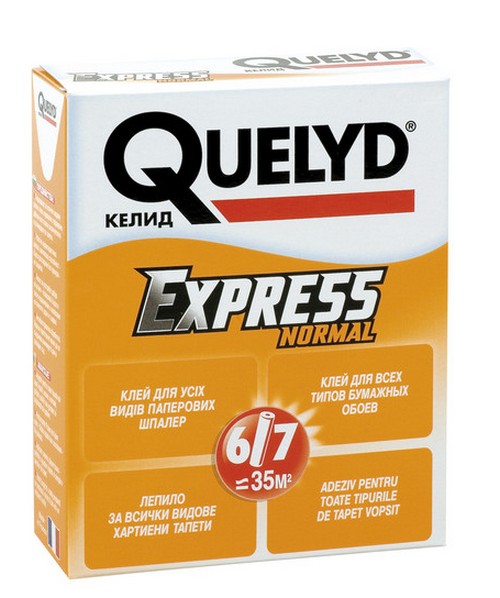
The wallpaper paste is usually produced in two types - there is a universal adhesive designed for all types of wallpaper and special glue for heavy wallpaper (structural, acrylic, jute and vinyl on non-woven basis). It is best to buy the glue that is provided by the manufacturer for a certain type of wallpaper. But if you really glue vinyl wallpaper with usual glue, then its consumption should be significantly increased.
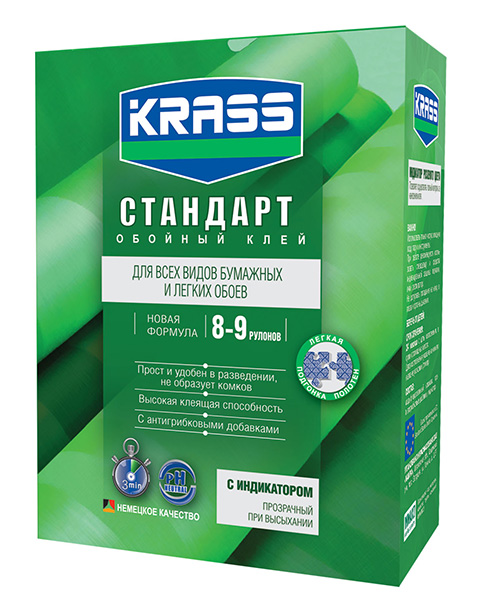
Wallpaper washable glue solely with synthetic glue or bustilate. After all, washable wallpaper will, in consequence, be washed with water! And these two types of glue are waterproof and will not allow the formation of mold.
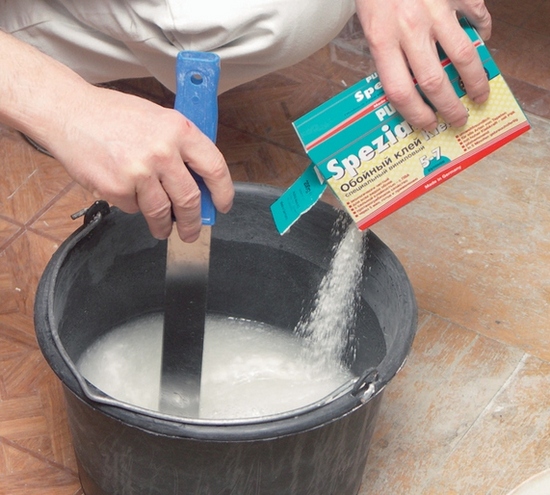

Wallpaper textile, velor and wallpaper of fiberglass is desirable to glue dispersion glue. The best choice for this type of wallpaper is the glue "Methylan". It is not sold in a powdered form, like a traditional wallpaper, but in the form of a ready-mixed solution. Dispersion glue is the most durable glue of all existing types.
Adhesive for non-woven wallpaper is worthy of separate consideration due to its different from all other types of glue application technique. This type of glue is applied directly to the wall by one or two layers, and the non-woven wallpaper remains dry. They try to glue them to the wall as soon as possible, literally immediately after applying wallpaper glue on it.
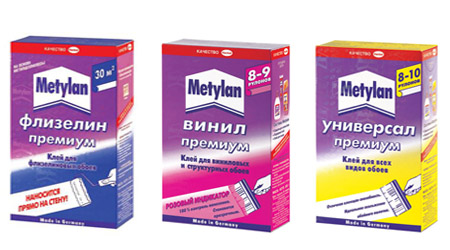
Adhesive for non-woven wallpaper is distinguished by its extraordinary economy. Its consumption is only one package (300 g) at 30 m 2. Its composition, usually, includes fungicidal and antifungal special additives.
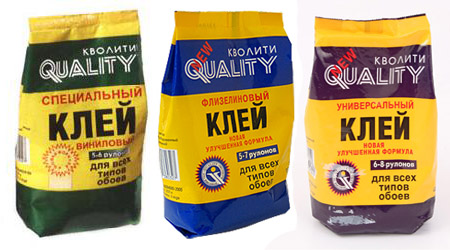
Select wallpaper paste - this is only half the case. You must also carefully observe its consumption. If you dilute it too liquid, then the wallpaper may not stick, or they can disperse to the side joints and the wall will be visible. As you can see, the consumption of the amount of glue for wallpaper is an important time in the repair of the apartment. Let's approach it seriously.



















